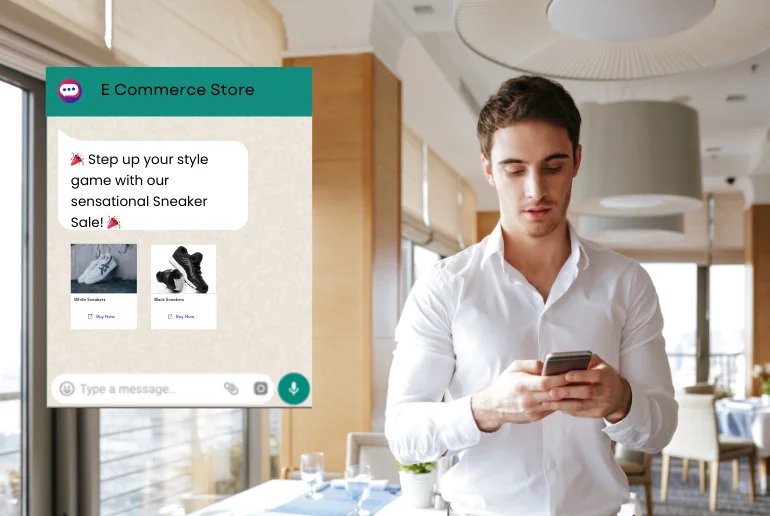Ready to boost your chatbot’s security? Dive into our guide on data security and encryption. We’ll show you how to keep your chats safe and sound. Let’s go.
Introduction
As more and more businesses use chatbots to talk to customers and make things run smoother, keeping people’s information safe is super important. Ensuring data security involves implementing various measures, such as encrypting data and remaining vigilant against potential cyber threats. This article focuses on the most effective strategies for enhancing data security in chatbot systems, thereby safeguarding individuals’ information and privacy.
Some Risks Associated with Chatbot Security
Chatbot security can sometimes be an issue, often stemming from two main factors: threats and vulnerabilities.
Threats are like bad events that happen once, such as cyber-attacks or viruses. They might try to mess things up or steal information.
Vulnerabilities, on the other hand, represent weaknesses in the chatbot’s data security measures, resembling holes in a fence that allow malicious activities to pass through. These weaknesses may arise due to errors in the chatbot’s development or inadequacies in its encryption protocols. strong enough.
Making a chatbot completely safe from all threats and vulnerabilities is tough. It’s like trying to make a house completely burglar-proof—it’s not easy!
When chatbots are built, they’re tested to find and fix any problems. But sometimes, little issues slip through and aren’t noticed until later.
But the good news is, that experts are always working to stay ahead of the bad stuff, finding and fixing these issues before they cause big problems.
So, while chatbot security risks can be tricky, they mostly come down to these two things: threats and vulnerabilities.
Threats
When it comes to keeping your digital space safe, there are various threats to watch out for. These include employee impersonation, ransomware and malware, phishing, whaling, and hackers repurposing bots.
If you don’t take action against these threats, they can result in data theft and manipulation, which can cause significant harm to your business and its customers.
Let’s explore each of these threats in more detail to understand what they entail and how they can affect you.
When it comes to keeping your digital space safe, there are various threats to watch out for. These include employee impersonation, ransomware and malware, phishing, whaling, and hackers repurposing bots.
If you don’t take action against these threats, they can result in data theft and manipulation, which can cause significant harm to your business and its customers.
Let’s explore each of these threats in more detail to understand what they entail and how they can affect you.
- Ransomware: Ransomware is a type of virus that sneaks into your computer and locks up your important files. Then, it demands money from you to unlock them.
- Malware: This is harmful software that can cause trouble on your computer or server. Ransomware is one type of malware. Other examples include Trojan Viruses, Spyware, and Adware.
- Phishing: Phishing is when scammers pretend to be someone trustworthy, like your bank or a friend, to trick you into giving them your personal information, like passwords or credit card numbers.
- Whaling: This is a more targeted form of phishing. Instead of going after everyone, hackers aim for high-ranking people in a company to steal valuable information.
Vulnerabilities
Insufficient encryption of chats and the absence of security protocols create vulnerabilities that compromise data security and chatbot security, providing openings for threats to exploit.
Hackers might find a way into the system through chatbots if there’s no HTTPS protocol to keep things secure. But sometimes, the problems lie with the hosting platform itself.
Some common vulnerabilities are:
- Unencrypted communications
- Back-door access by hackers
- Lack of HTTP protocol
- Absence of security protocols for employees
- Hosting platform issues
Strategies for Data Security in Chatbots
After putting in the effort to secure your chatbots, it’s vital to rest assured that you’ve taken all necessary steps. But what else can you do to keep your chatbot security top-notch?
Here are four simple strategies: encryption, authentication, following proper procedures and guidelines, and educating yourself and your team. Let’s explore each of these methods further.
End to End Encryption
End-to-end encryption is like a digital lock that keeps your chats private. You’ve probably seen the message “This chat is end-to-end encrypted” on WhatsApp—it means only you and the person you’re chatting with can see the messages.
Now, many chatbot designers are using this same encryption to make sure your conversations stay safe. It’s one of the best ways to keep your chats private and secure.
According to GDPR rules, companies must take steps to protect personal data by removing personal details and encrypting them. End-to-end encryption is crucial for companies to follow these rules and ensure data security.
Authentication
Chatbots rely on two essential security processes: Authentication, which confirms the user’s identity, and authorization, which grants access to information or functions. These processes ensure that the person using the device is genuine and not fraudulent.
Authentication involves steps to verify a user’s identity, which is necessary to access any portal. These processes form a robust security setup, with various subtypes.
Biometric Authentication
Biometric methods like iris scans and fingerprint scans are becoming more popular because they offer robust security. With advancements in biometrics, these methods have become more reliable in confirming a person’s identity. For example, iris scans use unique patterns in a person’s eye, while fingerprint scans identify individuals based on their unique fingerprints. These methods are considered secure because they are difficult to replicate.
Two-factor Authentication
Two-factor authentication adds an extra layer of security by requiring users to verify their identity through two separate channels. While it may seem old-fashioned, this method has stood the test of time and is still widely used, especially in sensitive areas like financial institutions. For instance, after entering a password, users might also need to input a code sent to their phone or email. This approach makes it harder for unauthorized users to access accounts, even if they have obtained the password.
User ID
User IDs, or usernames, are familiar to most digital users. They involve creating unique login credentials, typically including a username and password. However, it’s crucial to ensure that passwords are strong and not easily guessable, such as avoiding common choices like pet names or simple words like “password”. Strong passwords are essential for protecting accounts from unauthorized access.
Authentication Timeouts
Authentication timeouts add layer of security by limiting the time window for entering correct authentication information. This feature prevents hackers from repeatedly attempting to guess login credentials and gain access to secure accounts. After a certain period of inactivity or unsuccessful login attempts, the system automatically logs the user out or locks the account, reducing the risk of unauthorized access.
Processes and Protocols
You’ve probably noticed that many websites start with “HTTPS” in their URLs, indicating a secure connection. This is crucial for maintaining the security of data transfers. Our security teams rigorously enforce the use of HTTPS and encrypted connections for all data exchanges.
By relying on Transport Layer Security (TLS) or Secure Sockets Layer (SSL) protocols, we ensure that our business’s sensitive information remains safe from unauthorized access. These protocols act as robust barriers, shielding our data from potential breaches and providing peace of mind for both our team and our clients.
Conclusion
Monitoring chatbot activity is crucial, and access to chatbot controls should only be granted to authorized personnel. It’s essential to have a central platform where you can oversee various aspects of your chatbot’s performance, such as handling incoming tickets, tracking relayed information, managing chat hand-offs, and assigning agents to chats.
Using a chatbot builder like creyoface allows you to set different authorization levels. For example, only administrators have the authority to modify bot recipes and assign tickets to agents. This ensures that control over critical functions remains in the hands of authorized individuals.
Ready To Explore?
Frequently Asked Questions?
What is data security in chatbot interactions?
WhatsApp Carousels are a feature that allows you to send multiple images or cards in a single message. Users can swipe through the images or cards horizontally to view them.
How do chatbots ensure data security?
Chatbots ensure data security by using encryption protocols to safeguard information transmitted during interactions. Additionally, they may implement access controls and authentication mechanisms to restrict unauthorized access.
What is encryption, and why is it important in chatbot security?
Encryption is the process of converting data into a code to prevent unauthorized access. In chatbot security, encryption ensures that messages exchanged between users and chatbots are scrambled and can only be deciphered by authorized parties, thus safeguarding sensitive information.







